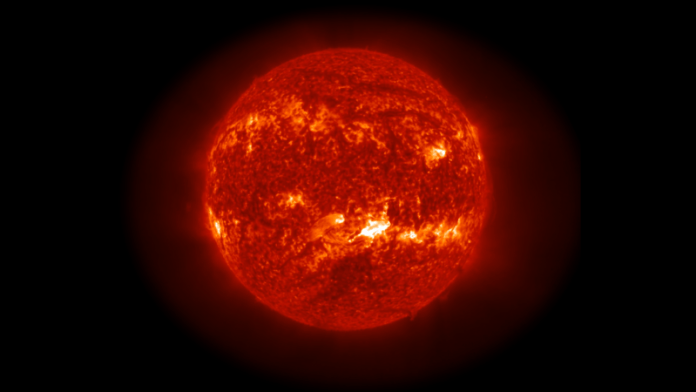At least seven coronal mass ejections (CMEs) from the sun have been observed. Its impact arrived on Earth on 10 May 2024 and will continue through 12 May 2024.
The activity at sunspot AR3664 was captured by the GOES-16 satellite operated by National Oceanic and Atmospheric Administration (NOAA).
Space Weather Prediction Center (SWPC) of NOAA issued a Geomagnetic Storm Warning on 10 May when the first of several CMEs reached Earth. The CME was very strong. The geomagnetic storm condition is ongoing may persist through the weekend.
Coronal Mass Ejections (CMEs) are occasional ejections of huge amount of hot plasma from the sun’s corona into the outermost layer of solar atmosphere (heliosphere). These mass ejections of plasma into heliosphere generate large disturbances in solar wind and interplanetary magnetic field which create magnetic storms in the geomagnetic field of the Earth when directed at Earth.
Solar wind is continuous stream of electrically charged particles (i.e., plasma) that emanates from the outer atmospheric layer corona of Sun. This poses threat to life forms and electrical technology based modern human society. However, Earth’s magnetic field provides protection against the incoming solar wind by deflecting them away from the Earth.
Drastic solar events like Coronal Mass Ejections (CMEs) create disturbances in the solar wind. Any large disturbance creates magnetic storms in the geomagnetic field of the Earth which can impact infrastructure in near-Earth orbit and on Earth’s surface, potentially disrupting communications, the electric power grid, navigation, radio and satellite operations.
***
References:
- NOAA. News & Features -Strong geomagnetic storm reaches Earth, continues through weekend. Updated: 10 May 2024. Available at https://www.noaa.gov/stories/strong-geomagnetic-storm-reaches-earth-continues-through-weekend
- Space Weather Prediction Center, NOAA. Yet another X-class flare has been observed. Published: 11 May 2024. Available at https://www.swpc.noaa.gov/news/yet-another-x-class-flare
- Prasad U., 2021. Space Weather, Solar Wind Disturbances and Radio Bursts. Scientific European. Published 11 February 2021. Available at https://www.scientificeuropean.co.uk/sciences/space/space-weather-solar-wind-disturbances-and-radio-bursts/
***




































